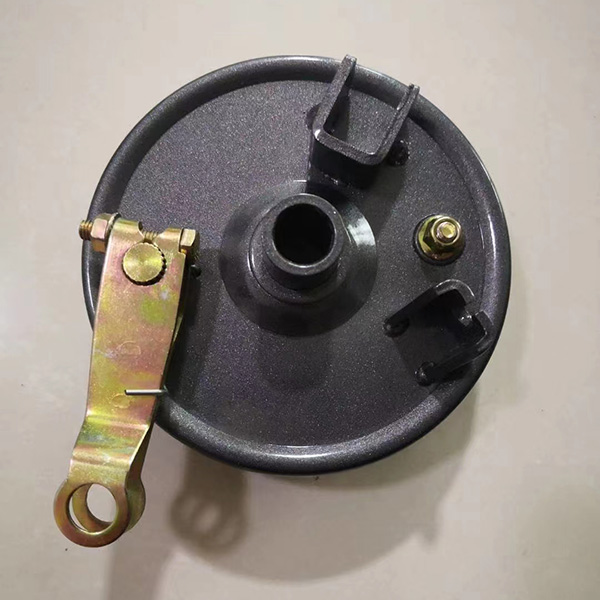
Front drum brake assembly
The front drum brake assembly is a type of braking system used in some vehicles,where the braking mechanism involves a drum and brake shoes.
The front drum brake assembly is a braking system used in some vehicles, utilizing a drum and brake shoes to create braking force. While less common in modern vehicles compared to disc brakes, drum brakes remain in use for specific applications due to their cost-effectiveness and simplicity.
Key Components:
Brake Drum:
Function: The cylindrical component that rotates with the wheel. The inside surface of the drum is where the brake shoes make contact to create friction and slow or stop the vehicle.
Material: Typically made from cast iron or composite materials.
Brake Shoes:
Function: The friction components that press against the inside surface of the drum to generate braking force. They are mounted on a backing plate and lined with friction material.
Types: Consist of primary (front) and secondary (rear) shoes. The primary shoe has a leading edge that helps wedge into the drum as it rotates, while the secondary shoe assists in braking and stabilizes the vehicle.
Wheel Cylinder:
Function: A hydraulic cylinder that applies force to the brake shoes. When brake fluid is applied, the wheel cylinder pushes the brake shoes outward against the drum.
Design: Typically consists of two pistons within a single cylinder.
Brake Springs:
Function: Springs hold the brake shoes in place and return them to their original position after braking. They include hold-down springs, return springs, and adjuster springs.
Design: Varies in size and strength depending on the brake system design.
Adjuster Mechanism:
Function: Automatically adjusts the position of the brake shoes to compensate for wear, ensuring consistent braking performance as the shoes wear down.
Types: Can be manual (requiring periodic adjustment) or self-adjusting (adjusting automatically).
Backing Plate:
Function: The metal plate that supports the brake shoes, wheel cylinder, and springs, serving as a mounting surface for the brake components.
Material: Usually made from stamped steel.
Brake Drum Hub:
Function: Often integrated with the drum, this component helps mount the drum assembly to the wheel hub.
Advantages of Drum Brakes:
Cost-Effective: Generally less expensive to manufacture and replace compared to disc brakes.
Durability: Can be more durable under certain conditions and provide effective braking for specific vehicle applications.
Self-Adjusting: Some drum brake systems feature automatic adjusters that help maintain optimal braking performance.
Disadvantages of Drum Brakes:
Heat Dissipation: Less effective at dissipating heat compared to disc brakes, which can lead to brake fade under heavy or prolonged braking.
Maintenance: Can be more complex to service and adjust compared to disc brakes.
Performance: May offer less consistent performance compared to modern disc brake systems, especially in high-performance or heavy-duty applications.
Installation and Maintenance:
Installation:
Involves mounting the drum, brake shoes, wheel cylinder, and associated springs and adjusters onto the backing plate. Proper alignment and adjustment are crucial for optimal performance.
Maintenance:
Regularly inspect the drum for wear or damage, check the brake shoes for thickness, and ensure the adjuster mechanism functions correctly. Replace components as needed to maintain braking performance.
Safety Considerations:
Brake Performance: Regularly check for signs of reduced braking performance, such as squeaking, grinding noises, or pulling to one side.
Fluid Levels: Ensure brake fluid levels are adequate and free of contamination.
Component Wear: Replace worn or damaged components promptly to avoid brake failure and maintain vehicle safety.






